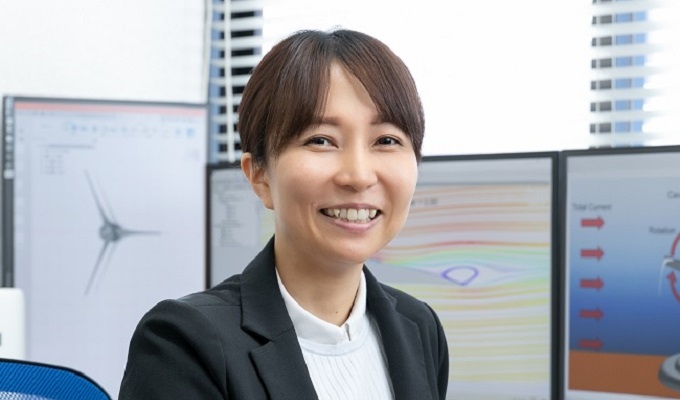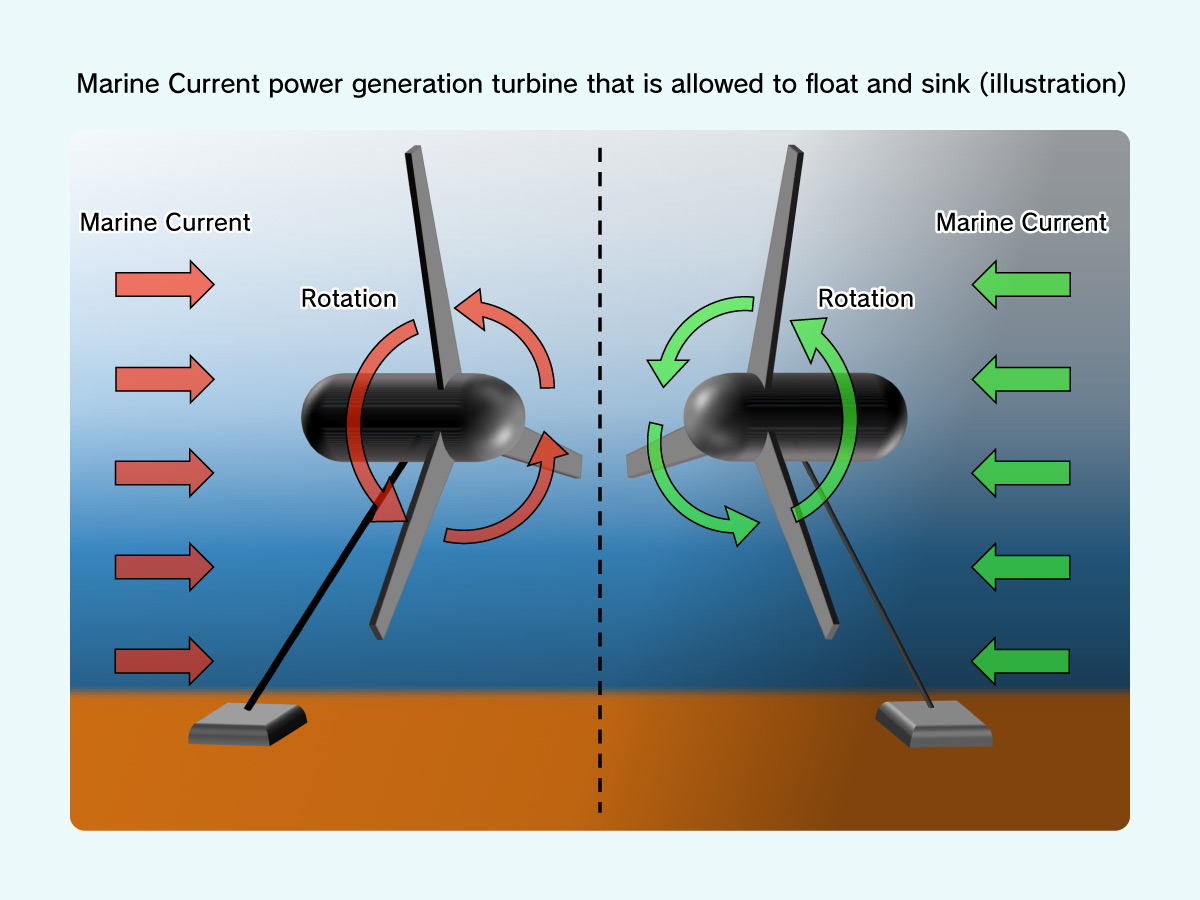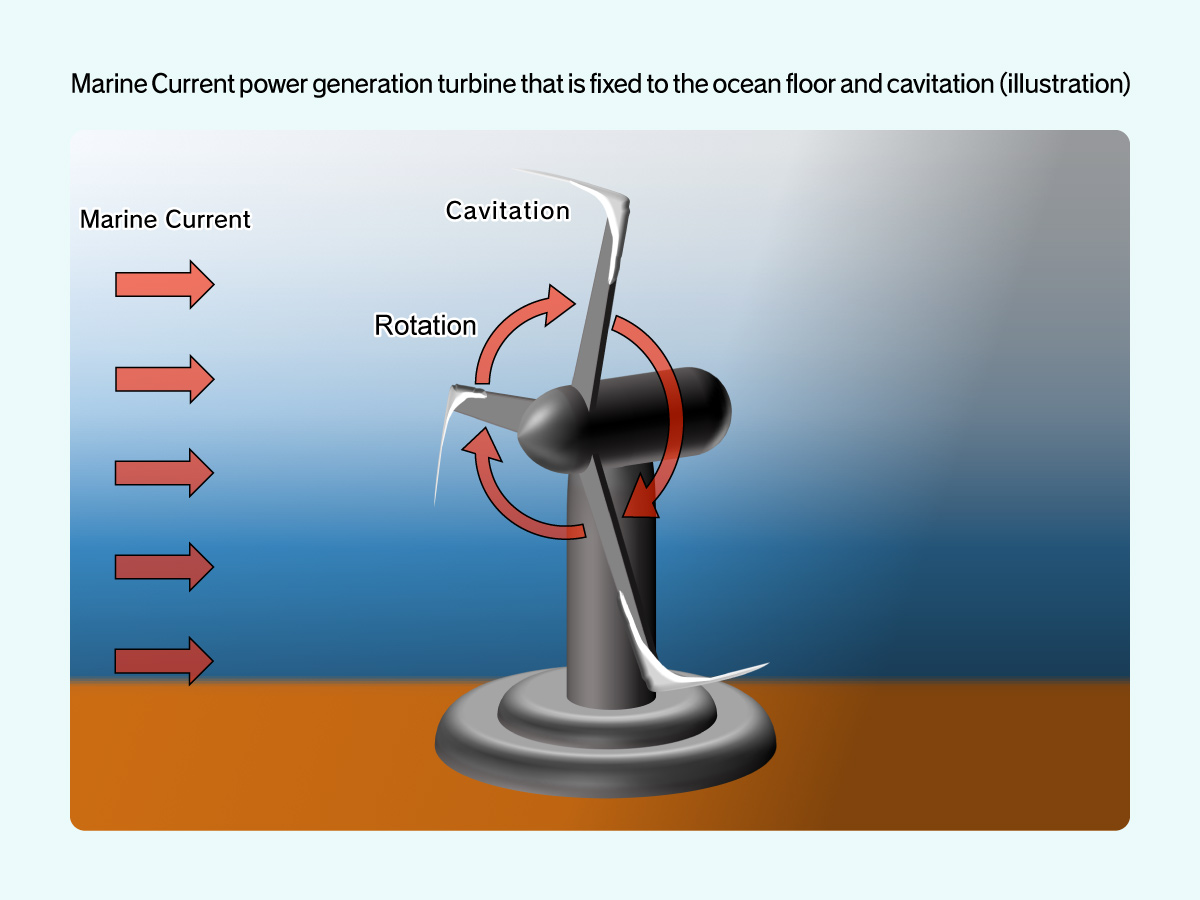On the high efficiency and cavitation performance that are needed for practical application of tidal stream power generation turbines
Research overview
Aiming to Aid the Practical Application of Marine Current Power Generation through Research into the Suppression of Cavitation Working to Raise the Efficiency and Lower the Costs of Marine Current Power Generation Systems
I have studied cavitation since I was a university student, and I have been endeavoring to improve the efficiency and lower the costs of marine current power generation systems through the application of this experience.
■ Ocean Energy with Potential
Ocean energy is attracting significant attention as various initiatives aimed at achieving a carbon-free society are gaining traction. It holds significant promise for Japan, which is surrounded by seas, and its development as a source of clean energy is being promoted. While there are many different types of ocean energy, like ocean thermal energy conversion, wave energy conversion, offshore wind power generation, marine current power generation, and hydrogen energy, I am working on marine current power generation, which harnesses marine current that fluctuate uniformly.
Lower maintenance costs, development of the power generation systems suited to Japan’s seas, highly efficient turbine designs, development of power units needed for drawing more energy from marine current, and more are needed for practical application of marine current power generation. One major challenge is the cavitation that occurs around turbines during power generation. I am conducting research into the thresholds at which cavitation occurs in relation to the water’s depth and the turbine’s rotational speeds, optimal blade design, and suppression of cavitation, and I believe that I can aid practical application by using this research and developing turbines for high-output marine current power generation systems.
■ Institute of Ocean Energy, the Base of My Research
Saga University’s Institute of Ocean Energy was designated a Joint Usage/Research Center in the area of ocean energy, and it has established a research foundation for Saga University’s ocean energy research. In particular, in the area of ocean thermal energy conversion, it is one of the world’s leading authorities in terms of technical expertise, and it has accomplished world-class feats, including the establishment of a research facility that primarily studies ocean thermal energy conversion in Malaysia.
Because the institute is a Joint Usage/Research Center, there are many researchers from multiple fields, both within and without the university, and I believe that this rich variety is a huge benefit in the area of research as it is leading to broader horizons and enables discussions that span disciplines at times.
It is my wish to pursue research into the area of marine current power generation in this conducive environment and work to enable Saga University to become a leader in its practical application, just like it has become a leader in ocean thermal energy conversion.
Message
Many initiatives are gaining traction as we work toward becoming a carbon-free society. Marine current power generation is a next-generation power generation system that harnesses the renewable energy of tidal ranges. We are working on raising the efficiency of marine current power generation systems, lowering their costs, and putting them into practical use.
Main publications
- Tsuru, W., Ueno, S., Kinoue, Y. and Shiomi, N., Comparison of One-Dimensional Analysis with Experiment for CO2 Two-Phase Nozzle Flow, Open Journal of Fluid Dynamics, Vol. 4, pp. 415- 424, 2014.
- Tsuru, W., Konishi, T., Watanabe, S. and Tsuda, S., Observation of Inception of Sheet Cavitation from Free Nuclei, Journal of Thermal Science, Vol. 26, pp. 223-228, 2017.
- Kitamura, S., Ehara, Y., Tsuru, W., Watanabe, S., Tsuda, S., Nomi, M., Lift and Drag Forces around Clark Y Hydrofoil under Cavitating Flow at Multiple Angles of Attack with Different Boundary Layer Characteristics, Turbomachinery, Vol. 12, No. 46, pp. 715-722, 2018.
- Zhang, Q., Takahashi, F., Sato, K., Tsuru, W. and Yokota, K., Jet Direction Control Using Circular Cylinder with Tangential Blowing, Transactions of the Japan Society for Aeronautical and Space Sciences, Vol. 64, No. 3, pp. 181-188, 2021.
- Tsuru, W., Kang, D., Sato, K. and Yokota, K., Proposal of Design Method for Viscous Micropumps with a Rotating-Disk Using Theory and Simulation, International Journal of Fluid Machinery and Systems, Vol. 14, No. 4, pp. 394-407, 2021







